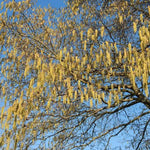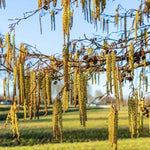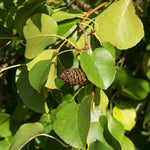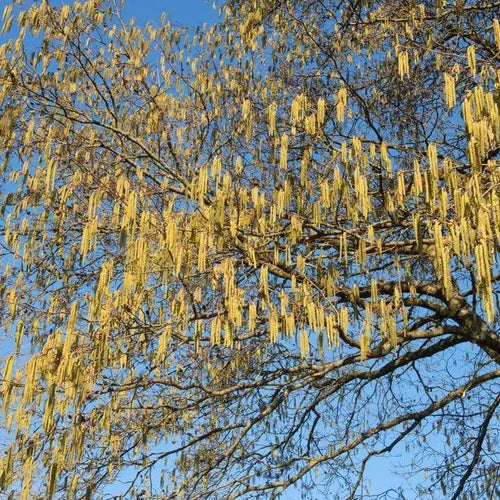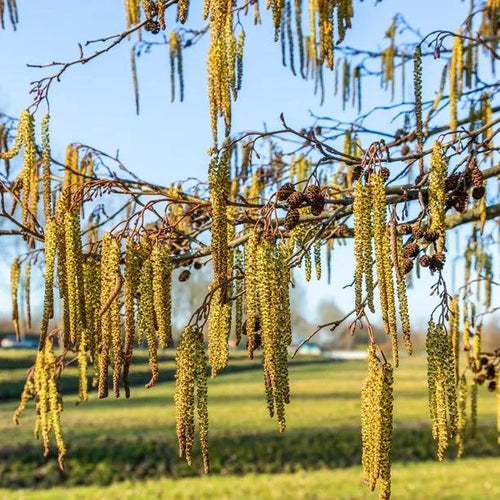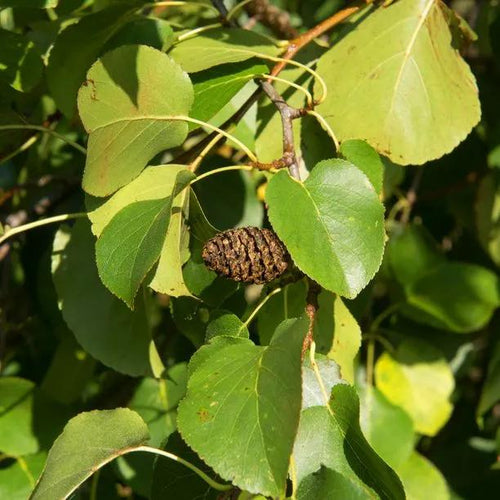Italian Alder Trees
'Italian Alder' these tidy trees have a fairly narrow canopy, tapering to a point at the top. Their glossy leaves look lovely in the sun and are among the last to fall in Autumn. In early spring, Italian Alder produces round female cones and long yellow male catkins, which provide pollen for bees. They're superb windbreak trees.
Alnus cordata is very vigorous: in ideal conditions, young trees can grow over a metre a year when established. It'll usually grow to around 20 metres tall, but 30 is possible.
Standard trees are the largest size that we deliver; you can buy younger Italian Alder saplings. Browse our variety of alder trees or our full range of garden trees.
Features
- Attractive yellow catkins in spring, good for early bees
- Very vigorous, with a suckering habit
- Grows on practically any soil, wet or dry
- Fixes nitrogen in the soil
- Good windbreak
- To 20-30 metres
- RHS Award of Garden Merit
Growing Italian Alder
It loves wet, heavy clay, but is incredibly versatile and will grow on dry, chalky terrain too. Unlike its cousins, it's a good choice for shallow topsoils over rocky terrain. It'll grow quite close to the coast.
None of the Alders like shade, but you can plant young trees in partial shade if they'll grow up into full sun within a couple of years.
Note: Alders have invasive roots that can break old water pipes and damage the foundations of old buildings or walls. 15 metres away from vulnerable structures is a safe distance to plant Alder. New build, concrete foundations aren't at risk.
History & Trivia
This tree was imported to Britain from Corsica and Italy in 1820. It is very resistant to rot: most of the piles that support Venice are made from this and other alder species, along with poplar, oak and elm.
The Alder family are nitrogen fixing trees: they increase soil fertility by releasing water-soluble nitrogen-based compounds from bacteria that live on their roots. This means that they are great for growing on really poor soil and can be interplanted with slower growing species to provide shelter & improve the soil for them. Their matted, fibrous roots are also very effective at holding loose or rocky soil together and helping to prevent erosion on river banks.
Standard trees are measured by their girth in centimetres 1 metre above ground level: their trunk's waist measurement. Unlike sapling trees and hedge plants, standards aren't measured by their height, which will vary quite a bit both between and within species.
So, a 6/8cm standard tree has a trunk with a circumference of 6-8cm and an 8/10 standard has a trunk 8-10cm around. This measurement makes no difference to the tree's final height.
On average, standard trees are 2-3.5 metres tall when they arrive, but we cannot tell you precisely how tall your trees will be before we deliver them.








 Secure, One-Tap Checkout
Secure, One-Tap Checkout
 Hand Picked, Delivered to Your Door!
Hand Picked, Delivered to Your Door! 1 Year Bareroot Guarantee
1 Year Bareroot Guarantee